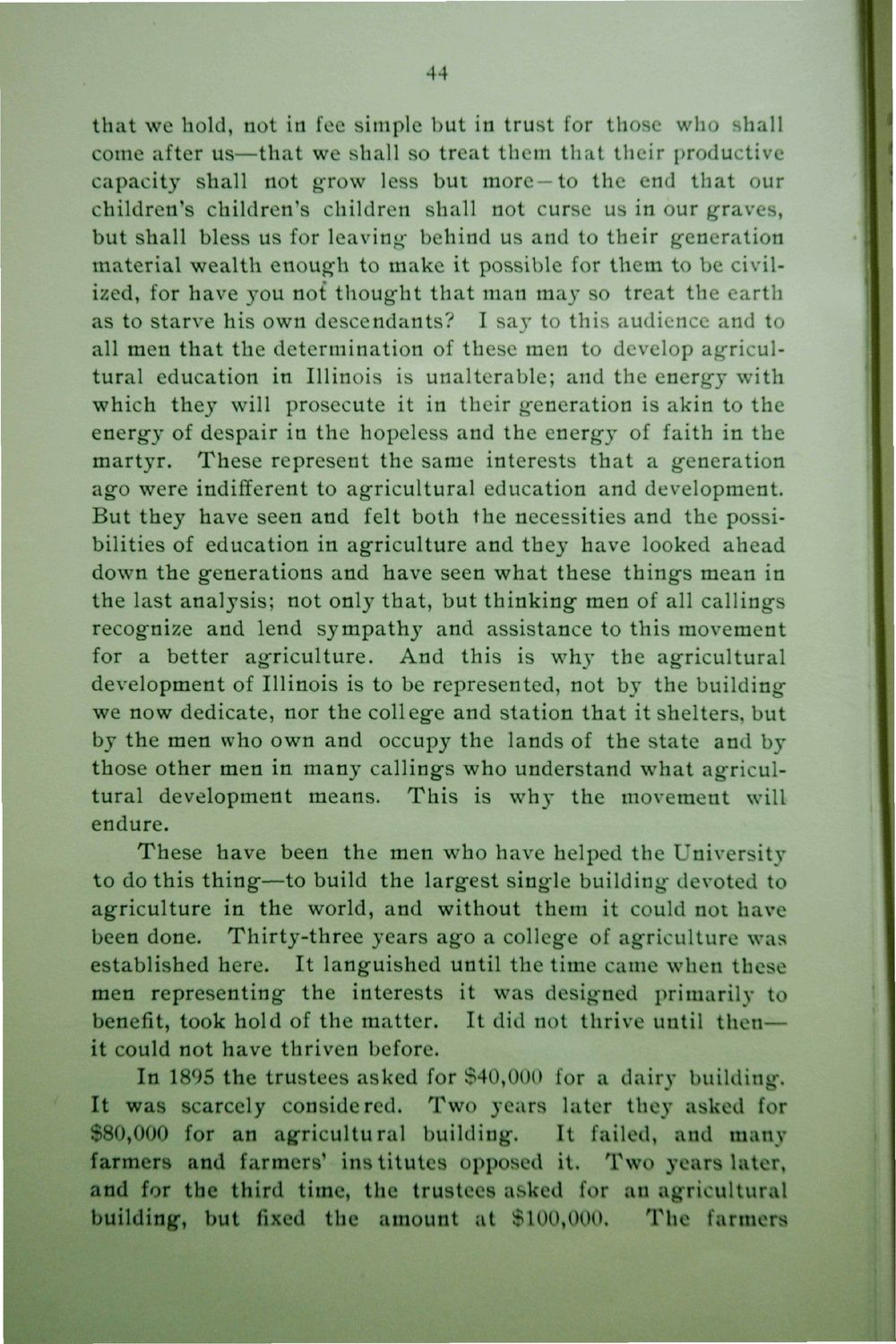| |
| |
Caption: Dedication - Ag Building
This is a reduced-resolution page image for fast online browsing.

EXTRACTED TEXT FROM PAGE:
44 that we hold, not in fee simple but in trust for those who shall come after us—that we shall so treat them that their productive capacity shall not grow less but more—to the end that our children's children's children shall not curse us in our graves, but shall bless us for leaving behind us and to their generation material wealth enough to make it possible for them to be civil* ized, for have you no£ thought that man may so treat the earth as to starve his own descendants? I say to this audience and to all men that the determination of these men to develop agricultural education in Illinois is unalterable; and the energy with which they will prosecute it in their generation is akin to the energy of despair in the hopeless and the energy of faith in the martyr. These represent the same interests that a generation ago were indifferent to agricultural education and development. But they have seen and felt both the necessities and the possibilities of education in agriculture and they have looked ahead down the generations and have seen what these things mean in the last analysis; not only that, but thinking men of all callings recognize and lend sympathy and assistance to this movement for a better agriculture. And this is why the agricultural development of Illinois is to be represented, not by the building we now dedicate, nor the college and station that it shelters, but by the men who own and occupy the lands of the state and by those other men in many callings who understand what agricultural development means. This is why the movement will endure. These have been the men who have helped the University to do this thing—to build the largest single building devoted to agriculture in the world, and without them it could not have been done. Thirty-three years ago a college of agriculture was established here. It languished until the time came when these men representing the interests it was designed primarily to benefit, took hold of the matter. It did not thrive until then— it could not have thriven before. In 1895 the trustees asked for $40,000 for a dairy building. It was scarcely considered. Two years later they asked for $80,000 for an agricultural building. It failed, and many farmers and farmers' institutes opposed it. Two years later, and for the third time, the trustees asked for an agricultural building, but fixed the amount at $100,000. The farmers
| |